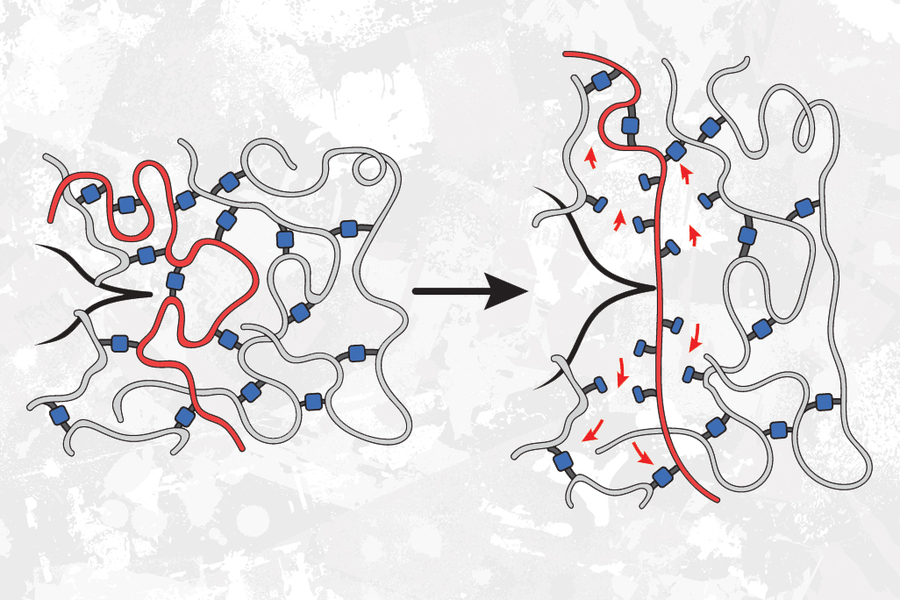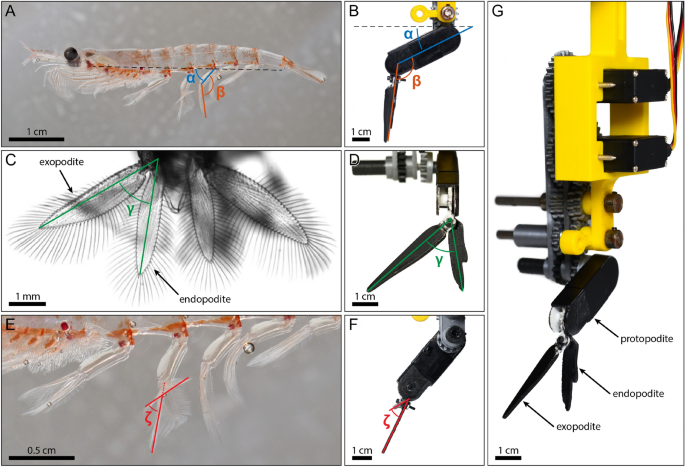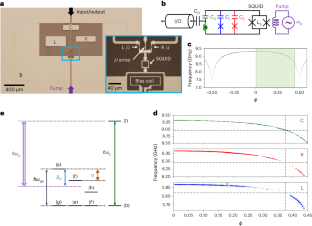化学者たちは、ポリマーネットワークに弱いリンカーを加えることで、その材料の引き裂き耐性を劇的に向上させた。 By adding weak linkers to a polymer network, chemists dramatically enhanced the material’s resistance to tearing.
2023-06-22 マサチューセッツ工科大学(MIT)
 As this polymer network is stretched, weaker crosslinking bonds (blue) break more easily than any of the strong polymer strands, making it more difficult for a crack to propagate through the material.
As this polymer network is stretched, weaker crosslinking bonds (blue) break more easily than any of the strong polymer strands, making it more difficult for a crack to propagate through the material.
Credits:Image: Courtesy of the researchers, edited by MIT News
◆これらのゴムのようなポリマーは一般的に自動車部品や3Dプリントオブジェクトの「インク」として使用されており、この手法をゴムタイヤなど他の材料にも応用する可能性を研究者たちは探っています。
◆この手法の重要な利点は、他の物理的特性を変化させないということです。この研究は、ポリマーの物理的特性を変えずに耐久性を向上させる方法を提供し、微小プラスチックの生成量やタイヤの寿命に大きな影響を与える可能性があります。
<関連情報>
- https://news.mit.edu/2023/weaker-bonds-can-make-polymers-stronger-0622
- https://www.science.org/doi/10.1126/science.adg3229
ポリマー架橋剤の容易なメカノケミカル環化反応により引裂き抵抗性が強化される Facile mechanochemical cycloreversion of polymer cross-linkers enhances tear resistance
Shu Wang,Yixin Hu,Tatiana B. Kouznetsova,Liel Sapir,Danyang Chen ,Abraham Herzog-Arbeitman,Jeremiah A. Johnson,Michael Rubinstein, and Stephen L. Craig
Science Published:22 Jun 2023
DOI:https://doi.org/10.1126/science.adg3229
Editor’s summary
Tough materials can sustain substantial subcritical damage without complete failure of the material, but trying to improve toughness can often lead to the degradation of other mechanical properties. Wang et al. designed elastomeric polymer networks that use a mechanophore as a cross-linker. The mechanophore cross-links are much easier to mechanically break than the ordinary carbon–carbon bonds in polymer strands or the second, stronger cross-linker used as a control. The mechanophore cross-links function as sacrificial bonds to elongate rather than break the bridge chains. When the cross-link density is low, the primary backbones can form tortuous physical cross-links that further toughen the polymer. —Marc S. Lavine
Abstract
The mechanical properties of covalent polymer networks often arise from the permanent end-linking or cross-linking of polymer strands, and molecular linkers that break more easily would likely produce materials that require less energy to tear. We report that cyclobutane-based mechanophore cross-linkers that break through force-triggered cycloreversion lead to networks that are up to nine times as tough as conventional analogs. The response is attributed to a combination of long, strong primary polymer strands and cross-linker scission forces that are approximately fivefold smaller than control cross-linkers at the same timescales. The enhanced toughness comes without the hysteresis associated with noncovalent cross-linking, and it is observed in two different acrylate elastomers, in fatigue as well as constant displacement rate tension, and in a gel as well as elastomers.



